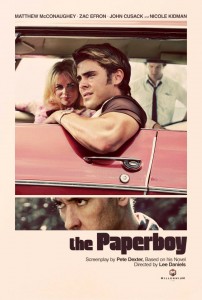 Pier Paolo Pasolini’s The Gospel According To St. Matthew is a masterpiece. A film so soulful and so incredibly well made that it will resonate with anyone regardless of their religious convictions.
Pier Paolo Pasolini’s The Gospel According To St. Matthew is a masterpiece. A film so soulful and so incredibly well made that it will resonate with anyone regardless of their religious convictions.
The film draws its basic style from the documentary aesthetic of the Italian neo-realists of the early Rossellini and Visconti, but Pasolini takes it a step further, adding a sense of poetry to the reality, in a new, more reflective incarnation of the style, similar to that employed later by the likes of Terrence Malick.
He begins the story with a melodic tone, preferring to tell it with the camera then with dialogue. The opening sequence, that establishes the hypnotic air of the film, is told solely in looks between the Virgin Mary and Joseph as he finds out she is pregnant and goes away for spiritual advice. Later, a girl does a long, beautiful dance in an extended shot that engages so completely that one is left stunned when she asks for the head of John the Baptist afterwards. Few films have ever been so gripping while doing so little on screen.
The film is interesting to look at in terms of its director. Pasolini was still in the early stages of his career. He had some repute as a poet of note and had co-written the classic Fellini film Nights Of Cabiria. He was a known communist and homosexual and his later work, like Salo, or the 120 Days Of Sodom, would push the edges of acceptability in content (not to mention being banned in several countries). Here however, he completely resists any urge to take the story to an extreme and fairly faithfully adapts its titular source. His political views however do infiltrate the movie. He casts Jesus as militant revolutionary, a man who preaches “he who is not with me, is against me”, and clarifies his sentiments in an incredible montage that disrupts the earlier tone to brilliant effect where Jesus preaches his sermons in rapidly cut close ups. What’s more interesting than Pasolini’s political stance however, is his religious stance, describing himself as “…an unbeliever who has nostalgia for belief”. Perhaps only someone with that kind of longing to believe could create a film this moving.
In keeping with the neo-realist tradition, Pasolini cast unknowns in the leading roles. Enrique Irazoqui, is effective as perhaps the angriest Jesus in cinema, while Margherita Caruso is effortlessly graceful in what is surely the screens most beautiful depiction of the virgin Mary. Despite their inexperience, the whole cast is uniformly excellent down the smallest roles.
With moments of great beauty, Pasolini has crafted one of the most soulful and engaging masterpieces in film history. Highly recommended.





